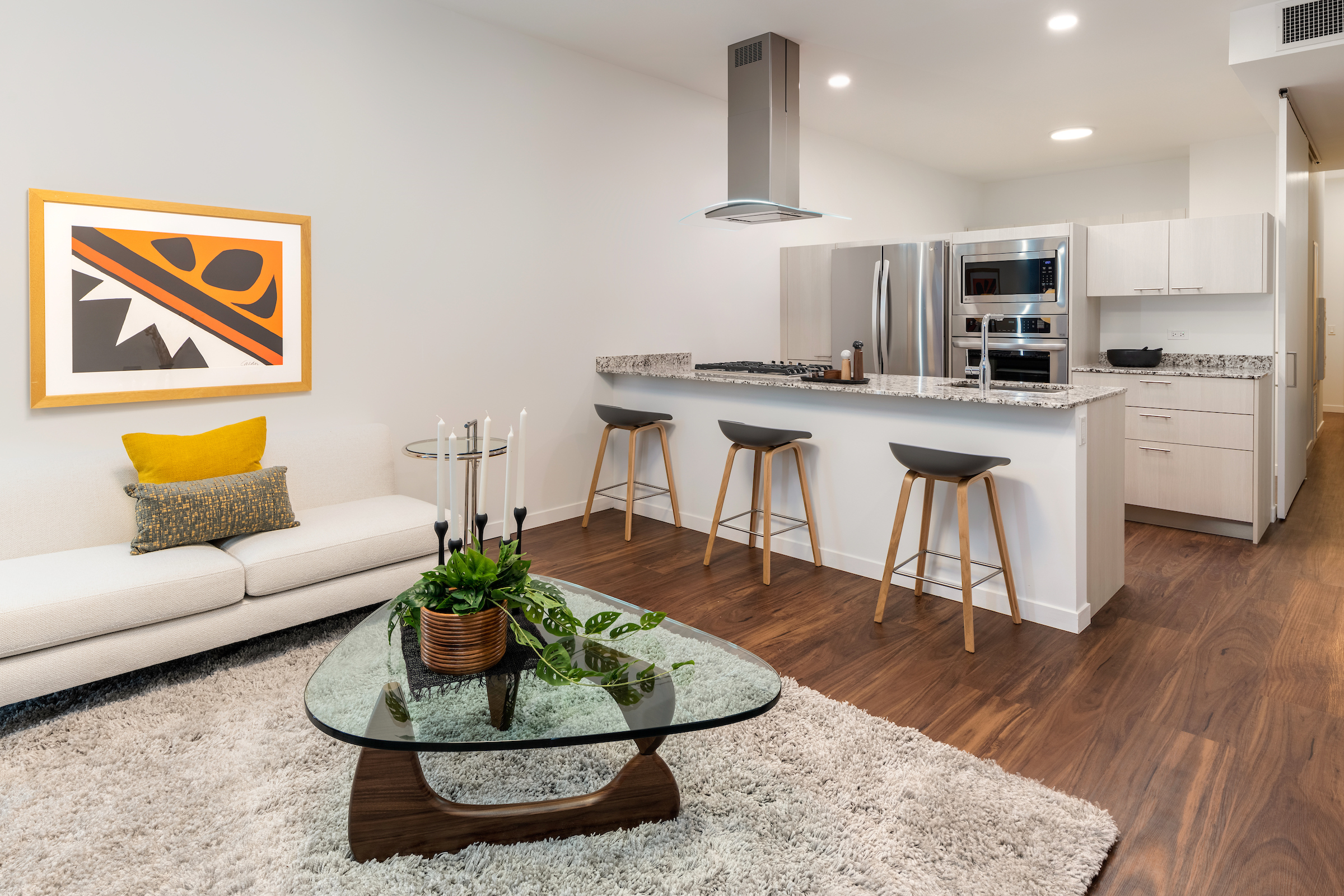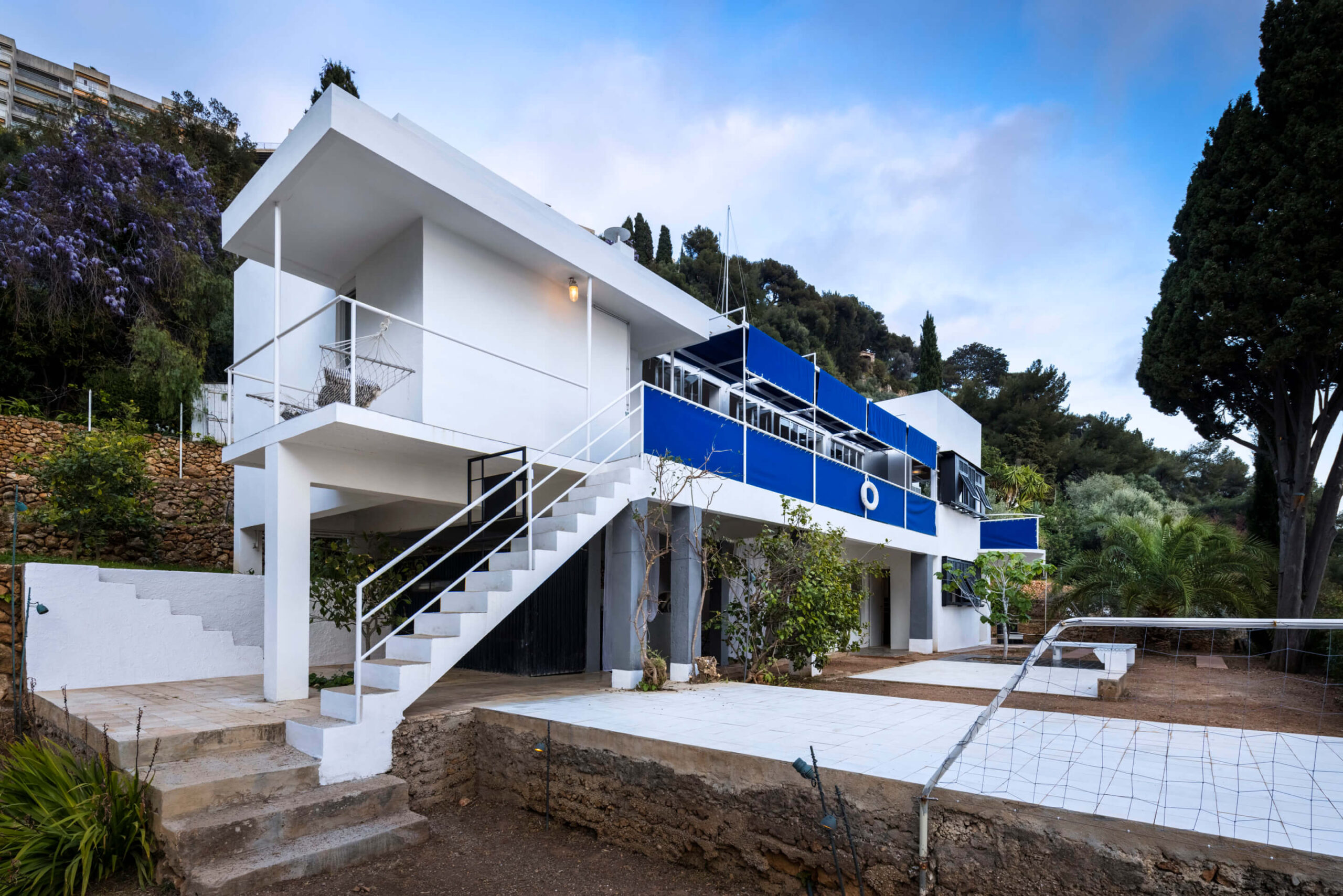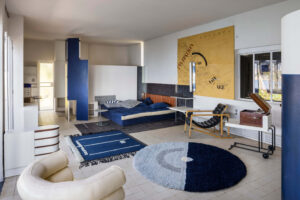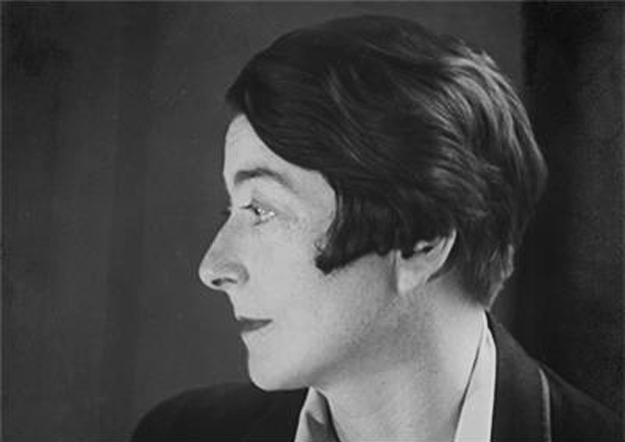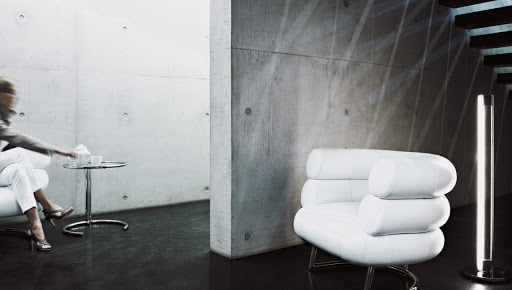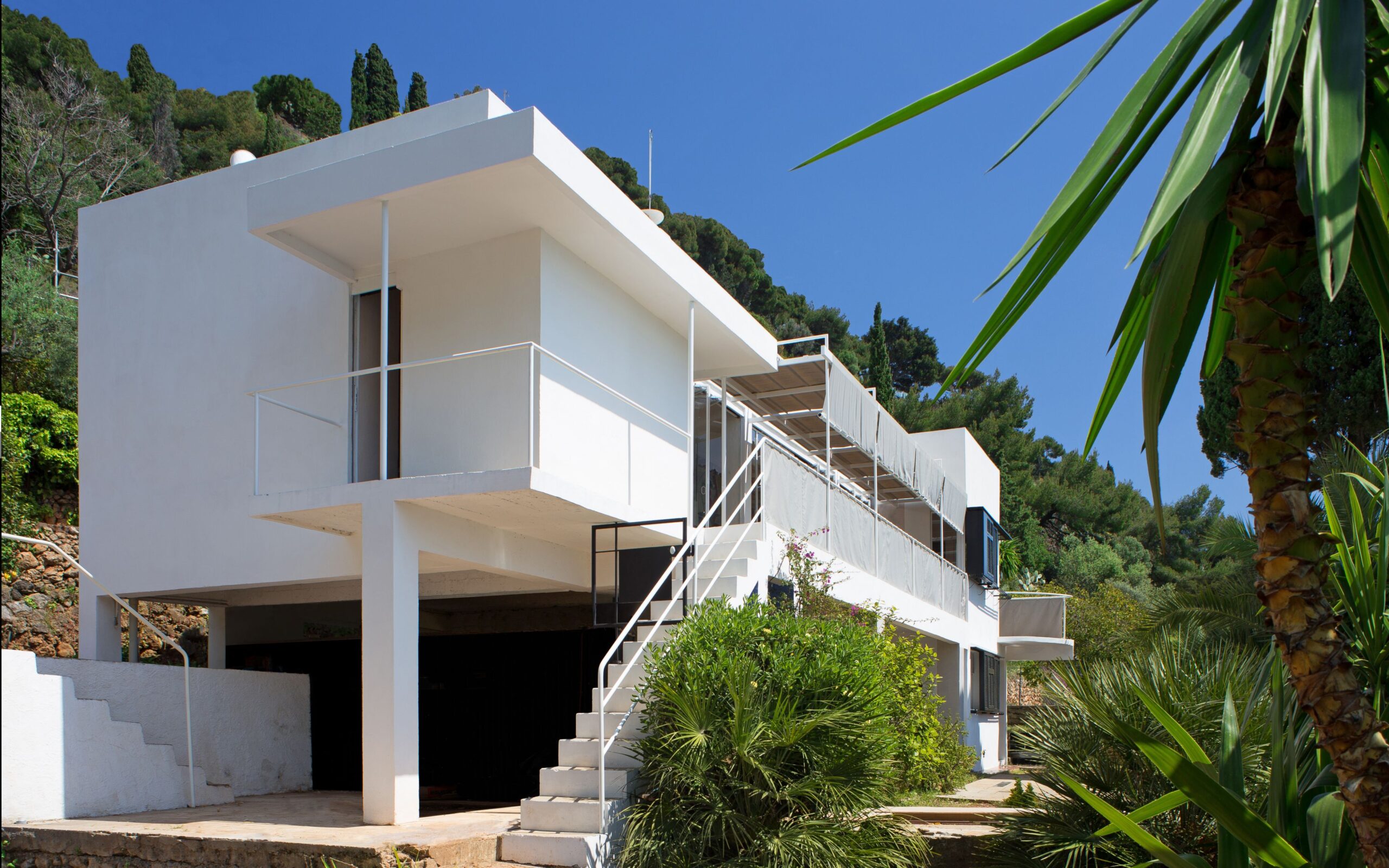One of the ways we honor the Forever Modern promise and keep it relevant at Optima is by curating both public and residential spaces in our communities with timeless furniture. Take a stroll through any of our Optima communities and you will find the Table E-1027 in beautiful settings of pristine Modernist furniture. Let’s take a closer look.
Table E-1027 is an adjustable steel and glass table designed by Irish designer Eileen Gray in 1927. Originally created for her home in the south of France by the same name, the table has since become one of Gray’s most famous designs.
The table’s design celebrates the simplicity of Modernist ideals of form and function. The table consists of two concentric forms of tubular stainless steel that are joined by two vertical tubes to adjust the height — with one of the forms serving as an adjustable arm and tempered glass functioning as the table’s surface. The story behind the design is that Gray originally conceived it for her sister, who routinely ate breakfast in bed. With a traylike surface that could be positioned comfortably over the bed, her sister could enjoy her morning routine while avoiding dropping crumbs on the linens.

Without question, Table E-1027 is one of Gray’s most famous pieces, even though she was a prolific designer. In the decades since it became available commercially, Table E-1027 has come to represent the epitome of Modernist design. It is multipurpose, adjustable and portable. It works just as well in a bedroom as in a living room or sitting area. And finally, it brings refinement and tastefulness to any interior setting.
At Optima, we’re proud to include Table E-1027 in a host of spaces and arrangements for our residents and their visitors to enjoy.
